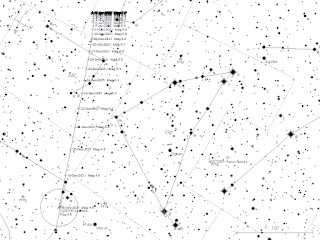Sunday, December 12, 2021
Seeing Comet C/2021 A1 (Leonard), the 2021 "Christmas" comet from Australia
Comet C/2021 A1 Leonard as seen looking west from Adelaide at 21:53 ACDST (60 minutes after sunset) shown at daily intervals from 18 to 25 December. Similar views will be seen in elsewhere in Australia 60 minutes after sunset.
Comet C/2021 A1 (Leonard) is this years “Christmas comet”. While not as spectacular as the “searchlight comet” Comet C/2011 W3 Lovejoy, it will be a nice little binocular object.
It is predicted to reach magnitude 4 at its brightest but it will be too close to the sun to see. Tonight, 12 December 2021, the comet will be at its closest to Earth, 0.233 AU (34.9 million km). However, the earliest we can expect to see it in the southern hemisphere is around the 16th, low in the twilight. As it climbs higher we will get better views but it will fade rapidly.
On the 18th it is about 1 and half a binocular fields south from Venus, the on the 21st it is around 2 binocular fields south of Saturn, on the 25th it will be around unaided eye threshold some distance from Saturn and Jupiter. It will be fuzzy dot to the unaided eye and a small tail may be seen in binoculars.
Black an white chart suitable for use with binoculars (you can click to embiggen and print this out, or download and print the PDF files below.
Unfortunately there are no prominent guide stars to help find it. While Venus and Saturn are obvious they are approximate guides, there are a few distinctive asterisms closer, but you will need binoculars to see them.
A black and white spotters chart suitable for printing is here . A B&W chart suitable for binoculars is available here , the large circle is the approximate field of view of 10x50 binoculars.
On the 16th the comet forms a diamond with Pi, Omicron and Xi Sagittarii, low on the horizon, on the 18th the comet is around 1 and half a binocular fields south from Venus below a kite shaped group of stars (Omega, 60, 59 and 62 Sagittarii). By the 23rd-25th the comet is amongst the faint stars of the constellation microscopium.
Labels: C/2021 A1, comet, unaided eye





 Click to read about or order
Click to read about or order Click to read about or order
Click to read about or order Click to read about or order
Click to read about or order Click to read about or order
Click to read about or order




